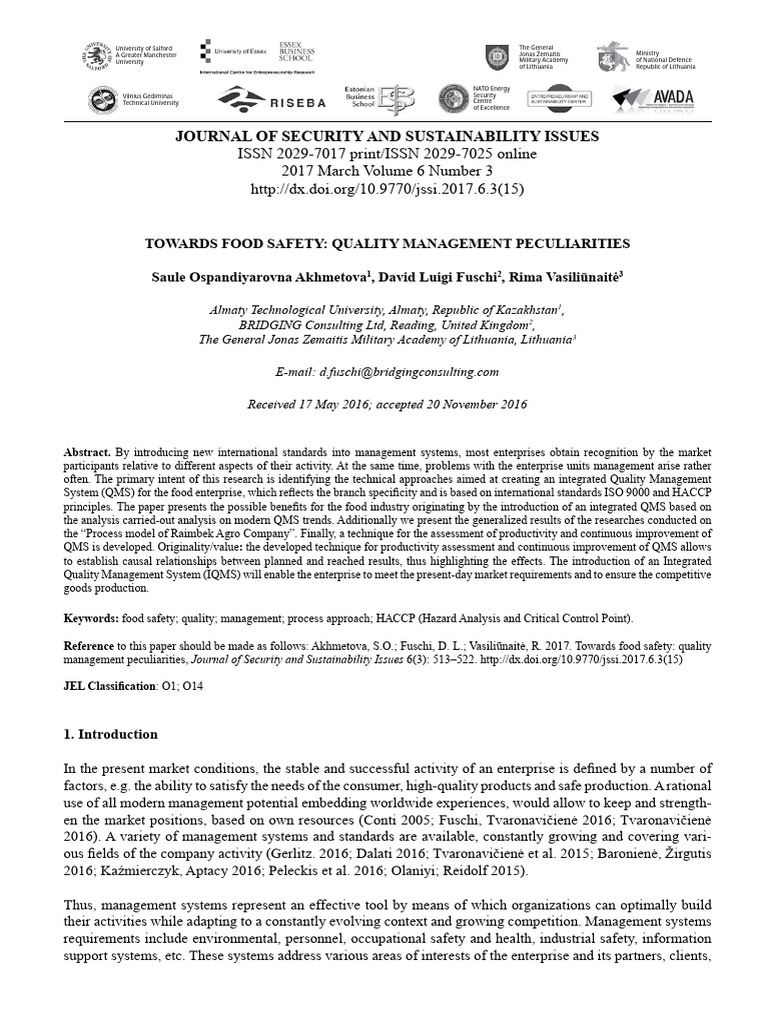Physical Address
304 North Cardinal St.
Dorchester Center, MA 02124
Physical Address
304 North Cardinal St.
Dorchester Center, MA 02124

In today’s fast-paced world, the demand for food that is not only delicious but also safe and reliable has never been greater. The intricate relationship between food safety and quality management is vital in ensuring public health and enhancing consumer trust. Managing quality control in food safety is a crucial process that involves numerous stakeholders, from producers to suppliers, distributors, and retailers. This article delves into the significance of managing quality control in food safety, exploring its practices, challenges, and the role technology plays in this dynamic field.
Food safety is a critical concern worldwide. Managing quality control in food safety begins with understanding the various components involved, including raw materials, production processes, and distribution methods. This comprehensive approach helps mitigate risks related to foodborne illnesses, which can have severe consequences for consumers and the food industry at large. A robust quality management system is essential for identifying hazards, ensuring compliance with regulations, and promoting best practices in food handling.
One of the cornerstones of effective quality management in food safety is the implementation of Hazard Analysis and Critical Control Points (HACCP) principles. This systematic approach identifies specific hazards that could adversely affect food safety, allowing organizations to develop measures to prevent or reduce the risks. By integrating HACCP into their operations, food businesses can enhance their ability to manage quality control, ensuring that every stage of the food supply chain adheres to safety standards.
Implementing effective practices is key to managing quality control in food safety. Several strategies can be employed to enhance safety and quality assurance across the food industry:
Proper documentation is an integral part of managing quality control in food safety. Keeping thorough records of processes, audits, and employee training can provide valuable insights and serve as evidence of compliance with regulatory requirements. Moreover, comprehensive documentation can be crucial in the event of a food safety incident, allowing organizations to trace back to identify the source of contamination.
While managing quality control in food safety is essential, it does come with its set of challenges. Some common hurdles faced by businesses include:
Despite the challenges, the integration of technology offers numerous benefits for managing quality control in food safety. Advanced tools such as blockchain, IoT devices, and AI can revolutionize how businesses monitor and maintain safety protocols:
In conclusion, managing quality control in food safety is fundamental in today’s global food landscape. As consumers become increasingly discerning about their food choices, the onus is on food businesses to implement robust quality management systems. Training and education, regular audits, supplier verification, thorough documentation, and embracing technological advancements are imperative to effective quality control procedures. The future of food safety lies in the commitment to maintaining high standards and continuously adapting to the dynamic challenges of the industry.
This visual illustrates key elements in managing quality control in food safety, capturing the essence of effective practices that contribute to the overall safety and quality of food products. By taking proactive steps and utilizing available technologies, we can foster a more secure food environment and enhance the quality of what we eat.
Ultimately, the journey toward impeccable food safety is ongoing, and by staying committed to managing quality control, we can ensure a healthier future for all consumers, where food safety is never compromised. Whether you’re a small vendor or a large corporation, prioritizing food safety and quality management will unlock new opportunities and build lasting trust in the marketplace.